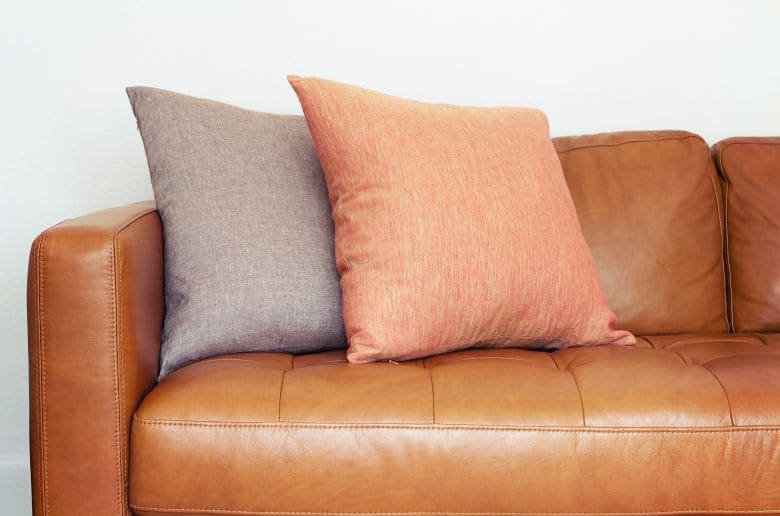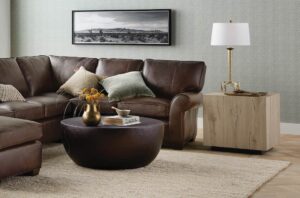Meet West Elm vs Arhaus, two contenders in the stylish yet affordable modern furniture arena.
West Elm brings forward an impressive blend of contemporary design and practicality, striking a chord with those who want their homes to reflect the latest trends without breaking the bank.
On the flip side, Arhaus invites you to a gallery of uniqueness, where each piece speaks to the art of craftsmanship and distinct quality.
Amidst this, the surge of mid-century modern decor has captured the imagination of many, urging a fusion of timeless style with modern comfort.
So, the real challenge lies not in finding a brand but in deciding which brand aligns seamlessly with your personal space and style.
Comparison Table
| Feature | West Elm | Arhaus |
|---|---|---|
| Brand Focus | Mid-century modern | Unique, artisanal |
| Price Range | $500 – $5,000 | Averages $5,000-$6,000 for leather sofas |
| Delivery | 2-3 weeks for in-stock items | Some issues reported |
| Quality | Good, products last 5-8 years | High-quality materials |
| Customer Feedback | Mixed, with some service issues | Mixed, with value concerns |
| Warranty | 30-day return, no warranties | 10-year limited on frame and springs |
| In-Store Experience | Over 85 locations, engaging | Stores available, experience varies |
| Product Range | Varied, including sectionals | Sleek designs, leather options |
| Made-to-Order | Available, up to 10 weeks delivery | High-quality custom options |
Unpacking the Key Differences
When deciding between West Elm or Arhaus, several pivotal factors come into play, influencing your choice. Let’s examine these differences closely.
Price Points: High-End or Budget-Friendly?
At first glance, price sets a noticeable divide between West Elm vs Arhaus.
West Elm positions itself as a go-to for a broad audience, with sofas ranging from the more budget-conscious $500 to the upscale $5,000.
Arhaus, in contrast, caters to those with a larger wallet, with their leather sofas starting at an average of $5,000-$6,000. Here’s a quick look at how their pricing compares:
- West Elm: $500 – $5,000
- Arhaus: $5,000 – $6,000
Quality and Lifespan: Which Lasts Longer?
When it comes to quality and longevity, both brands have evolved.
West Elm has made notable strides since 2017, suggesting a comfortable lifespan of 5 to 8 years for their products. Arhaus boasts high-quality leathers and robust construction, yet some question the value proposition given the price point.
Here, we’re looking at furniture that doesn’t just occupy space but lives through time.
Variety in Style: More Than Just Sofas
Both West Elm and Arhaus offer an assortment beyond sofas, appealing to diverse tastes and home decor styles. West Elm showcases loveseats, sectionals, and chaise lounges among their array.
Arhaus counters with sleek leather options and a broader spectrum of designs. Their offerings serve as the backdrop for life’s moments, whether you’re after the cozy minimalism of West Elm or the signature statement pieces of Arhaus.
Shopping Experience: Online vs Physical Store
The shopping experience is another arena where West Elm and Arhaus differ. West Elm operates over 85 locations, ensuring an engaging in-store experience.
The brand’s fun and straightforward approach to shopping have won over many. On the contrary, Arhaus also has its physical presence but focuses more on the quality of the individual piece rather than the shopping journey itself.
Note: While online shopping offers convenience, nothing quite compares to the tactile pleasure of testing out your future couch in person.
As we pull back the curtain on West Elm and Arhaus, we see two brands with distinct identities vying for the same space in our homes.
We find that the decision is less about good or bad and more about alignment with personal style, budget, and expectations.
Deciding on the Best Fit for Your Living Space
The final decision hinges on several post-purchase considerations that shape the overall satisfaction with your furniture choice.
Which Brand Aligns with Your Style?
The individuality of your home is paramount. West Elm’s modern, clean lines might resonate with those seeking a contemporary vibe. They provide an eclectic mix to suit a casual yet polished aesthetic.
In contrast, Arhaus may appeal to those yearning for unique, artisan-crafted pieces that assert a more distinct personality in their living space.
The table below captures the essence of each brand’s style offerings:
| Style Aspect | West Elm | Arhaus |
|---|---|---|
| Design Philosophy | Modern Simplicity | Unique Artistry |
| Aesthetic | Contemporary | Eclectic |
Customer Service: Who Will Be There for You?
Exceptional customer service is non-negotiable.
West Elm has made accessibility a cornerstone, with various channels for support. Arhaus also prides itself on a customer-centric approach, offering personalized service, though sometimes at a slower pace.
Customers’ experiences can vary, but both brands strive to address concerns, reflecting their commitment to satisfaction.
Understanding Warranty and Return Policies
A comprehensive understanding of warranty and return policies is crucial. Both West Elm and Arhaus provide warranties that cover defects in materials and workmanship.
However, West Elm offers a more generous return policy, allowing returns for a full refund within 30 days, while Arhaus limits returns to store credit after a 14-day period.
Smooth Delivery: Who Does It Better?
The last mile of your purchase, delivery, is pivotal. West Elm provides a tiered delivery service with options for every need and budget.
Arhaus is known for its white-glove delivery service, where careful handling and setup are guaranteed. Regardless of choice, rest assured that both prioritize delivering your new piece to its destination with care.
Important Note: Always confirm delivery specifics at the time of purchase to avoid any misunderstandings.
Navigating the subtleties of post-purchase support is as significant as the initial selection.
With both West Elm and Arhaus, what stands out is a commitment to ensuring that their furniture not only becomes a part of your living space but also meets the rhythms of your life with the right support and services.
Conclusion
Our exploration of West Elm vs Arhaus underscores that each brand’s philosophy shapes the furniture that turns a house into your home.
While West Elm leans towards modern and affordable design, Arhaus champions unique, durable pieces. Cost and quality seem entwined, with each brand offering a different balance.
For the discerning shopper, the decision is personal, reflecting individual style, value for money, and a commitment to quality.
Looking ahead, the landscape of furniture shopping will continue to evolve, with these brands adapting to the ever-changing desires and needs of their customers.





